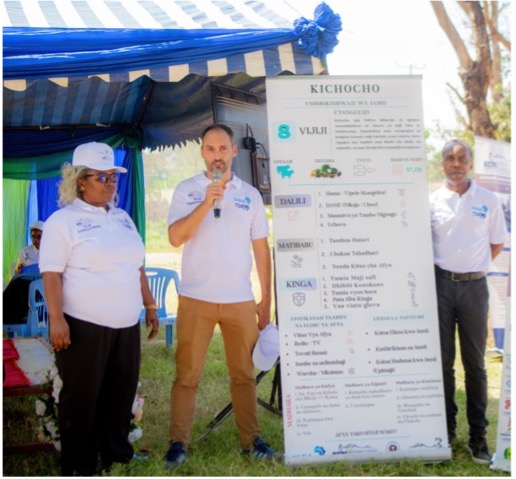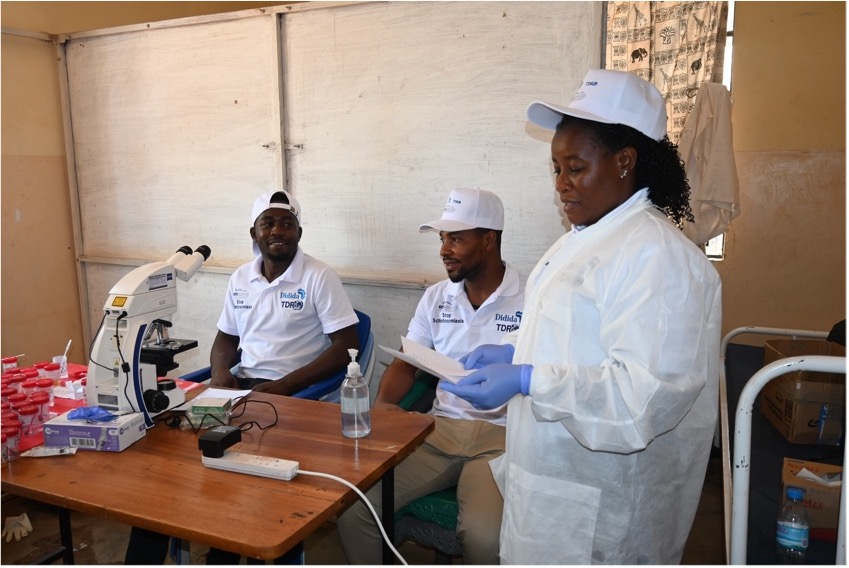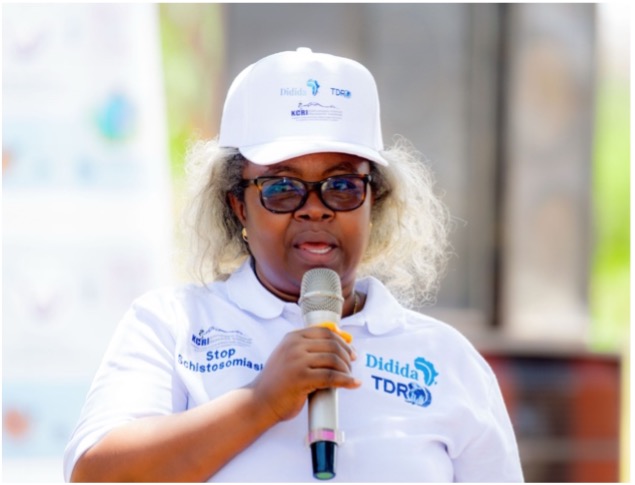DIDIDA in action: community, culture and digital health in Chekereni
The Digital Innovations & Diagnostics for Infectious Diseases in Africa (DIDIDA) project is built on a simple conviction: innovation in diagnostics and digital health can only succeed if it is shaped with, and not just for, the communities most affected by infectious diseases. While the project develops new multiplex diagnostic tools and mobile applications across several African countries, it also invests in participatory research, citizen engagement and locally led events that ground technological advances in real community priorities. The citizen event held on 19 September 2025 in Chekereni Ward, Mabogini Village, Moshi District Council in Tanzania is a concrete illustration of this approach. It brought together free health screening, cultural performances, targeted education and structured data collection, all aligned with DIDIDA’s core objectives of strengthening research capacity, co-developing digital solutions and encouraging adoption of innovation by health authorities, clinicians, businesses and patients.
A citizen event at the heart of an endemic community
Chekereni is a rice-growing area with long-standing exposure to waterborne diseases such as schistosomiasis and malaria. Against this backdrop, the DIDIDA team in Tanzania, led by Kilimanjaro Clinical Research Institute (KCRI) and Kilimanjaro Christian Medical Centre (KCMC), designed a full-day citizen event combining health services and community dialogue. The event ran from 08:00 to 18:30 and offered free, voluntary screening for schistosomiasis, malaria, HIV, intestinal helminth infections and selected non-communicable diseases including diabetes, hypertension and obesity. In parallel, a community festival, education sessions and interactive activities created an environment where residents could learn, participate and ask questions in a familiar and culturally meaningful setting. Representatives from the Ministry of Health, the Regional Medical Office and the DIDIDA consortium formally opened the event, underscoring its significance as part of national and international efforts to control infectious diseases.
This citizen engagement did not arise spontaneously. It was prepared through a series of meetings and trainings from July to September 2025. Local leaders were first consulted to define roles and expectations. Community health workers (CHWs) from eight villages were then mobilised, trained and supported to develop performances, booth content and facilitation skills. Rehearsals were used to refine key messages, ensure clarity of health information and coordinate logistics. This preparatory work reflects one of DIDIDA’s central commitments: building sustainable local capacity and ensuring that communities are not only recipients of information and services, but active partners in the research and innovation process.
Culture as a vehicle for health education
One of the most distinctive elements of the Chekereni event was the deliberate use of culture to communicate complex health messages. Around 300 people attended the community engagement programme, which was structured around an original drama titled “Maisha Kando ya Maji” (Life along water streams). This performance followed the story of a young boy who frequently swims in irrigation canals and later becomes ill. His family, influenced by local beliefs, initially attributes his condition to witchcraft and spiritual causes. They spend scarce resources on ineffective traditional remedies before community health workers organise a village meeting to explain schistosomiasis, its symptoms, modes of transmission, available treatment and preventive measures.
Through this narrative, the drama highlighted the consequences of misattributing illness, the financial and emotional costs of delayed care, and the transformative role of accurate information. By showing that the boy’s condition is caused by schistosomiasis rather than supernatural forces, the performance aimed to correct misconceptions and encourage timely health-seeking behaviour. The drama was complemented by poems and “ngonjera”, a form of local poetic dialogue that reinforced key messages in a memorable and emotionally engaging way. The session concluded with expert-led explanations from health workers and DIDIDA PhD students, bridging the gap between cultural storytelling and biomedical guidance. This blend of art and expertise is fully aligned with DIDIDA’s goal of encouraging adoption of innovations through context-sensitive communication.
Integrated screening and real-time learning
Throughout the event, health screening services and the community stage programme ran in parallel, allowing residents to move between education activities and clinical services at their convenience. Approximately 120 people underwent screening. Dedicated stations offered tests for schistosomiasis and other intestinal parasites, malaria rapid diagnostics, HIV testing, blood pressure measurement and basic metabolic screening. Health workers from Chekereni, KCMC and KCRI jointly staffed the stations, supported by DIDIDA PhD students who ensured clinical flow, coordinated announcements and helped manage crowd movement.
Laboratory results provided a snapshot of the community’s health status. No malaria infections were detected among the 105 participants screened, suggesting either low transmission at the time of the event or effective local control. HIV screening identified seven positive cases out of 105 people tested, who were immediately referred to appropriate care according to national standards. Stool examinations revealed that almost one quarter of participants (22.9%) were infected with intestinal parasites, primarily Ascaris lumbricoides, Schistosoma mansoni, Entamoeba histolytica and Giardia lamblia. Urinalysis of 117 samples showed that most participants had no detectable abnormalities, though about 15% had leukocytes suggesting possible mild urinary infections, and a small number had protein, bilirubin, glucose or nitrite present.
These findings underline the persistent burden of parasitic infections in rural communities and demonstrate the value of integrated screening that addresses both communicable and non-communicable diseases. Crucially for DIDIDA, the event also served as a living laboratory for understanding how point-of-care testing, sample collection and patient flow might operate when new diagnostic tools developed by the project are deployed in real-world settings. The organisation of stations, data capture processes and referral pathways provide practical lessons that will feed directly into future validation studies and implementation planning.
Understanding who is at risk and what people know
Beyond clinical screening, the event incorporated systematic data collection on knowledge, attitudes and practices related to schistosomiasis and other waterborne diseases. Structured questionnaires were administered by trained staff in Swahili, ensuring that respondents fully understood the questions. Eighty-one participants completed the knowledge survey. The sample was largely rural and agricultural, with an average age of 56 years and a predominant share of women. Farming was the main occupation and most respondents had completed primary school, with relatively few having reached secondary education.
Overall, awareness of waterborne diseases was high: more than nine respondents out of ten reported having heard about such diseases and being able to identify symptoms. However, this general awareness concealed significant inequalities. People with secondary education and those in non-farming occupations showed substantially higher awareness than farmers and participants with only primary schooling or none. Age and gender did not significantly affect knowledge levels, suggesting that occupational exposure and education, rather than demographic characteristics, are the main determinants of awareness in this context.
Perceptions of who is most at risk of waterborne diseases also varied. Many respondents identified young children under five as the most vulnerable group, reflecting recognition of children’s frequent water contact through play and daily tasks. Some, especially men and people engaged in business or formal employment, emphasised the vulnerability of older adults, perhaps in relation to chronic morbidity. Pregnant women were rarely mentioned as a high-risk group, revealing a gap in understanding that may have implications for maternal and child health. A considerable proportion of respondents believed that all groups face equal risk, which, although inclusive, may dilute attention to highly exposed sub-groups such as children living near irrigation canals.
Practices, behaviours and room for change
The survey confirmed that unsafe water-use practices remain common despite relatively high awareness. Around two-thirds of households reported treating their drinking water, which means that more than one third do not apply any treatment before consumption. At the same time, the vast majority of participants stated that they are willing to change daily behaviours to prevent waterborne infections. Many already report using clean utensils and maintaining environmental cleanliness, but these actions are not always sufficient to stop transmission in the absence of safe water sources and appropriate sanitation.
Questions about childhood water contact revealed that natural water bodies play a central role in household routines. Over half of respondents reported washing clothes in rivers when they were young, and a substantial proportion bathed in rivers or dams. These practices create repeated opportunities for contact with contaminated water and are strongly associated with schistosomiasis risk. Stool testing during the event found Schistosoma mansoni infections among individuals with river contact, reinforcing the link between exposure and disease. For DIDIDA, these findings highlight the need to design prevention strategies that acknowledge the practical realities of water use in agricultural settings, rather than assuming that households can simply avoid river contact.
Digital readiness: a foundation for DIDIDA’s mobile solutions
A key component of the Chekereni event was the exploration of digital literacy and mobile phone usage, in direct connection with DIDIDA’s ambition to co-develop mobile-based diagnostic support and decision tools. More than 90% of respondents reported owning and using a mobile phone, indicating very high penetration in this rural area. Basic phones were more common than smartphones, but both were widely used for calls and SMS. Financial services such as mobile money were also frequently accessed, especially among basic phone users, demonstrating familiarity with transactional digital tools.
The survey showed that SMS is the most acceptable channel for receiving health information: over seven participants out of ten expressed willingness to receive messages in this format. However, half of these respondents reported network problems, and over 40% mentioned cost as a constraint, underlining the importance of designing interventions that are low-cost or subsidised and technically resilient in areas with variable connectivity. WhatsApp usage was limited due to the lower prevalence of smartphones and data costs, although among those who do use it, it represents a potential channel for richer content and group communication.
Health facilities, doctors and health workers were identified as the most trusted sources of information, far ahead of radio, television, digital platforms or social media. For DIDIDA, this combination of high mobile phone ownership, strong trust in health professionals and existing use of SMS and mobile money suggests a clear direction: future digital tools should leverage SMS and voice messaging in local languages, be endorsed or delivered via recognised health services, and be designed to work effectively on basic phones as well as smartphones. The citizen event thus provides essential field data to refine DIDIDA’s digital health strategy and ensure that upcoming mobile applications, decision support tools and surveillance features are realistically adapted to local technology ecosystems.
The economic burden of schistosomiasis
The event also provided an opportunity to document the economic consequences of schistosomiasis at household level. Among twenty households that reported cases of schistosomiasis in the previous twelve months, most indicated direct expenditures exceeding 20,000 Tanzanian shillings, covering consultation fees, medications, transport and other care-related costs. For rural families dependent on small-scale farming, such expenses represent a significant financial strain. Indirect costs were also considerable: many households reported losing between four and seven days of work or school due to illness, and some experienced even longer periods of reduced productivity.
Analysis of cost patterns by occupation, gender, age and education showed that farmers, women, older adults and those with primary education bore a substantial share of higher direct expenditures. Indirect costs, measured in days lost, were again particularly pronounced among farmers, who depend on continuous physical labour to safeguard crops and income. These findings are consistent with broader evidence that neglected tropical diseases, including schistosomiasis, can entrench poverty by simultaneously reducing earning capacity and increasing health expenditure.
Interestingly, the data also revealed that past experience of schistosomiasis is associated with lower willingness to pay for prevention. Respondents with a history of the disease were more likely to report that they would not contribute financially to preventive measures, whereas those without prior infection were unanimously willing to pay. Possible explanations include frustration with the effectiveness of past interventions, fatigue from recurring expenses, or simple lack of financial reserves. In contrast, education level had a positive effect on willingness to contribute: participants with primary or secondary education were markedly more inclined to pay small amounts annually to support preventive actions. Together, these observations provide a nuanced picture of how economic burden and health literacy shape community engagement in prevention, and they offer important parameters for the design of future DIDIDA-supported financing and insurance models.
Willingness to invest in prevention and community participation
Despite these financial pressures, the majority of respondents reported that they would be willing to pay a modest annual contribution towards measures such as clean water, sanitation improvements or health education, with most citing amounts below 2,000 Tanzanian shillings per year and fewer households ready to commit to higher ranges. This suggests that community-based financing mechanisms could be viable if calibrated to local capacity and coupled with visible, tangible benefits.
The survey further showed that nearly all participants consider untreated wastewater to be a serious health risk and recognise waterborne diseases as a significant problem in their community. A large majority support treating wastewater at household level before it is released into the environment, and most express a willingness to change their daily habits to reduce disease risk. These attitudes reinforce the idea that communities are not resistant to prevention efforts; rather, they require practical, affordable and context-sensitive solutions – precisely the kind of solutions that DIDIDA aims to co-design with local partners.
From field evidence to DIDIDA’s innovation pathway
The Chekereni citizen event offers more than a successful day of screening and education; it provides concrete evidence that will inform DIDIDA’s broader research and innovation agenda. First, the event demonstrates the feasibility and value of integrating multiplex screening into community-based activities. The experience gained in setting up stations, managing samples, protecting confidentiality and ensuring immediate referral to care will directly support the clinical validation of DIDIDA’s new low-cost diagnostic tests, including those that combine multiple pathogens in a single point-of-care assay.
Second, the detailed data on mobile phone use, digital preferences and network barriers will guide the design of DIDIDA’s digital components. The project’s digital strategy includes mobile apps for health workers, decision-support tools and integration with national health information systems. Insights from Chekereni point towards a multi-channel approach that prioritises SMS and voice for community-facing functions, while reserving smartphone-based applications for health professionals and facilities with stronger connectivity. In addition, the strong trust placed in health workers suggests that digital tools will be most effective when embedded within existing service delivery structures, rather than operating as stand-alone applications.
Third, the event exemplifies DIDIDA’s commitment to capacity building. KCMC/KCRI PhD students played a central role in planning, implementing and analysing the citizen engagement. Through this experience, they strengthened skills in community mobilisation, field epidemiology, digital data collection and interdisciplinary collaboration. This directly contributes to the project’s objective of developing early-career African researchers and equipping them to lead future studies and innovations in infectious disease control.
Implications for policy and partnerships
The results emerging from Chekereni have clear implications for policy and for the partnerships that DIDIDA is cultivating with ministries of health, local governments and international organisations. They confirm that community health education needs to be continuous, locally tailored and integrated into routine outreach rather than organised only around sporadic campaigns. They also show that investment in water, sanitation and hygiene infrastructure remains fundamental: educational efforts alone cannot overcome the risks associated with daily dependence on rivers and dams for washing and bathing.
At the same time, the event illustrates how digital health strategies can complement, but not replace, face-to-face engagement. Policy frameworks that support subsidised health SMS, partnerships with mobile network operators and the use of local languages in voice messages could amplify the reach of DIDIDA’s future tools. The documentation of economic burden and willingness to pay also argues for including schistosomiasis in community-based insurance schemes and for guaranteeing free or subsidised diagnosis and treatment at primary care level. These approaches align with DIDIDA’s ambition to move beyond technological prototypes and contribute to sustainable, scalable models of care.
Conclusion: citizen engagement as a cornerstone of DIDIDA
The citizen event in Chekereni demonstrates, in a very tangible way, what DIDIDA stands for: science that listens to communities, innovation anchored in real-world constraints, and partnerships that span local leaders, health workers, researchers, ministries and international funders. By combining culture, screening, education, data collection and digital exploration in a single day, the event created a rich space for mutual learning. Residents received immediate health benefits and practical information, while the DIDIDA consortium gained insights into behaviours, risks, economic realities and digital readiness that will shape future diagnostic and digital solutions.
As DIDIDA continues to develop multiplex diagnostic tools, mobile applications and decision-support systems across its African and European sites, experiences like Chekereni will remain central. They ensure that innovations are not only technically sound, but also acceptable, accessible and aligned with the lived realities of patients, health workers and communities. The lessons drawn from this event will feed into ongoing work on digital platforms, clinical validation studies and policy dialogue, reinforcing the project’s overarching goal: to provide effective, affordable and scalable tools for tackling poverty-related infectious diseases in Sub-Saharan Africa through an integrated approach that combines research excellence, digital innovation and deep community engagement.
Want to know more?
Are you a student and you want to learn more? A researcher seeking to consult our publications? A citizen eager to better understand the issues? A decision-maker who can promote this innovation? A journalist looking for an engaging story to tell?





